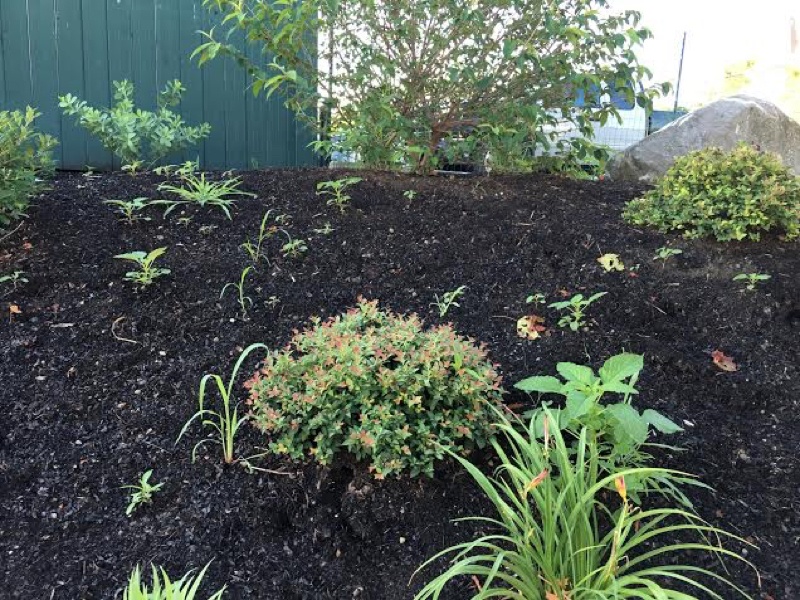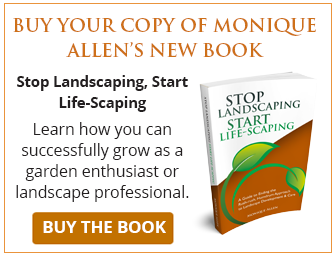How Do I Turn Weeds Into A Garden
What is it about the task of removing unwanted plants from our garden that causes us to hate it so much? Weeding seems to be the one thing that can turn every gardener into a world-class complainer. Could it be that it is deeply dissatisfying drudgery? Or that it feels endless and soul-crushing? Oh, the dreaded task of weeding! It seems like something we need to discuss. First, if you're a gardener at heart, I'll bet I can improve your attitude and brighten your spirits if you'll just stick with me through this blog. Let's start by talking about two critical components to effective, positive weeding. The first is mindset. The second is approach. When you align the correct mindset with the right approach, weeding isn't such a painful exercise. To get into mindset, let's take a shallow dive into the topic of maintenance in general and attitudes toward it and be sure to watch the how-to-weed video below. There are, of course, any number of things in life that need to be maintained. We care for our homes with daily, weekly, monthly and even seasonal tasks, many of which include some level of cleaning. If we want our car to last, we need to maintain it with regular check-ups and periodic service. Pet owners have their own set of regular maintenance tasks, including feeding, grooming, exercising, and vet check-ups. As humans, we need quite a bit of maintenance, too; showers and shaves, teeth brushing and flossing, annual check-ups and teeth cleanings. Life is full of tasks and everything that is important to us requires some level of regular maintenance to keep things happy, healthy, and at peak performance. Personal hygiene, house-cleaning, car and pet care become routine and even a matter of habit. I think you can see where I'm going with this. Maintaining a healthy, properly-functioning garden is no different than any of these other areas of our lives. Getting into the habit of regular, routine care and maintenance of your garden will reap the same benefits you experience when you take proper care of yourself, your home, pets, and vehicles. How and when you weed is as important as why you weed. There are three distinct elements to the practice of weeding that I'd like you to adopt in order to become a stellar weeder. The tools you choose, the technique you use, and the timing of the task will be what separates a weekend warrior from a stone-cold pro. TOOLS: Your hands alone are not the best tools for weeding. The main reason is because you often can't remove weeds entirely with your hands. Do you really think those weeds WANT to come out? They do not. They're grabbing on with those roots fully intending to stay right where they are. I think to myself (and, yes, often SAY it out loud) -- that's not weeding! That's simply disturbing the plant. Ever disturbed a hornets' nest? They get mad and come after you. So when you simply disturb the weed, removing neither all the vegetation nor the roots fully, the plant just thinks it's been threatened, gathers its resources, and either grows back or sets seeds as an act of revenge to ensure it will live on even after you kill it. TECHNIQUE: Weeding is rarely a casual task to be done while walking by. How well does that work for dusting your shelves or waxing your car? No. You have to stop and plan to weed – even if just for 15 minutes. Grab the right tool, a pair of gloves, and a bucket. Pick a three-square-foot plot and weed that. Go after the roots and ALL the vegetation. Fully remove the plant so that it doesn't have a chance to grow back, dig its roots deeper, or set a bunch of seeds in motion. It's GONE. Weeding is digging, I say to my staff. It isn't pulling, grabbing, ripping or tugging with hands. I am forever saying, "Where is your claw?" "Where is your bucket?" to our newbies. To properly weed, you need to have a tool that will enable you to loosen the soil and get the WHOLE PLANT. Sometimes that's a cultivator (claw), or a stronger tool such as a Japanese hoe. Or, when faced with a super tough spot or deeply rooted cluster of weeds, you may need a shovel or a four-tined spading fork. It's time to get serious. Size up your area and the weeds in it. For shallow rooted weeds such as crabgrass, a claw will do fine. With a deeply rooted weed like Amaranth, a hoe or shovel may be in order. Soil moisture will also be a factor. The best time to weed is right after it rains, when the soil is moist and loose. In drought conditions, the soil is tight and doesn't give up weeds readily. Sometimes just watering the morning before you weed can make all the difference in making the task much easier. TIMING: It may seem like anytime is a good time to weed and on some level you would be right because not weeding isn't a good approach. But if you really want to be successful and make headway toward having fewer weeds to contend with, then the timing of your work matters. Time of Season: All annual weeds (including crabgrass) will go through several seeding cycles in the spring in the race to make as many offspring as possible to keep their kind on the planet. Your job is to weed BEFORE these prolific plants go to seed. Ideally, before they even flower. ALL plants will set flowers and then those flowers will ripen to seed. The minute you see a weed in flower, you know you are in trouble because seeds are right around the corner. There is an old farmer's adage that goes, and I am paraphrasing here, "One year of seed gives seven years of weed." That means when you let even one plant go to seed and deposit those seeds in the soil, you are essentially making a deposit in the bank -- the seed bank. Mother Nature's soils are one of the most generous banks around. It will not allow those seeds to germinate all at once. Instead, only a measured amount will germinate at any one time. This ensures that more and more seeds can be deposited and more and more weeds can germinate over time. That soil can hold years and years and years of seed, so making further deposits only ensures that these weeds will come endlessly, year after year. The lesson -- get your weeds removed ASAP in their growth cycle to ensure that you are not making deposits in the seed bank. Time of Project Life: The early stages of a landscape's life, when it has been first planted and in those first three years, are the most critical for managing weeds. Low-Maintenance is all the rage, but I am here to tell you that low-maintenance can be designed for, but isn't instant. It is earned with an upfront investment of good planning and design, stellar preparation and planting, and outstanding maintenance. Without these three elements, low-maintenance will be hard to come by, unless chaos is something you enjoy. So to think that we are going to get away with planting, then walking away and doing nothing because we just designed something "sustainable" is a pipe-dream. If you are going to invest in a landscape, ideally one that is perfectly aligned with your climate and soils and native flora, you better be willing to carry that investment into the next three to five years of care to ensure that you can achieve that natural balance that will be low-maintenance and sustainable. I am not saying Nature is all chaos, but I am saying that it is wild and often tangled and doesn't exhibit the order we like in our human spaces. It's okay to love a good hike in nature and be willing to toil and sweat through brush and thickets. But at home, we tend to like a more manageable, attractive (at least to us) version of nature, and that includes some regular work. And that means weeding, my friend. Well and often. The payback, though, are beautiful results that are sustainable and deeply satisfying. Read the second article in this series, How to Weed Your Garden Like a Pro: Part II Now it's time to talk about approach.

Crabgrass (Digitaria) and Pigweed (Amaranth) are taking up residence in this newly planted garden. It's TIME to weed!  Here's what I see all the time: I'm walking the garden with clients, talking about their landscape, pointing out the weeds and they say, "Oh sure, I'm out here every weekend weeding and they won't go away!" Then they bend down, grab a weed, rip at it once or twice and say, "See, they just keep coming back even when I weed."
Here's what I see all the time: I'm walking the garden with clients, talking about their landscape, pointing out the weeds and they say, "Oh sure, I'm out here every weekend weeding and they won't go away!" Then they bend down, grab a weed, rip at it once or twice and say, "See, they just keep coming back even when I weed."There are two fundamental timing elements:

TWEETABLE TIP
Align with the correct mindset and right approach, so weeding isn't such a painful exercise! Learn how to weed like a pro,
VIA @GardenContinuum

How Do I Turn Weeds Into A Garden
Source: https://www.thegardencontinuum.com/blog/how-to-weed-your-garden-like-a-pro-part-1
Posted by: kinderfron1970.blogspot.com

0 Response to "How Do I Turn Weeds Into A Garden"
Post a Comment